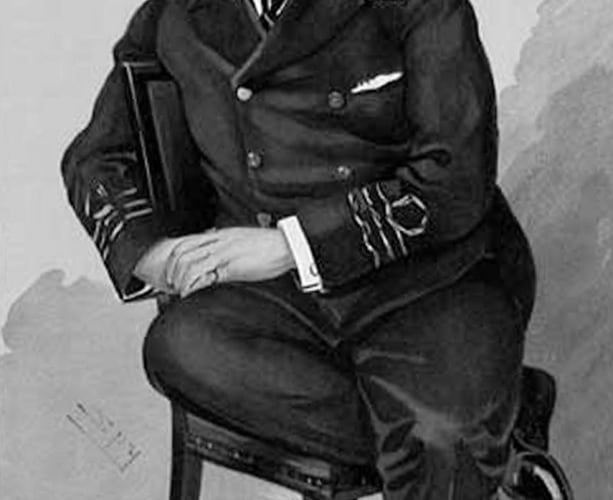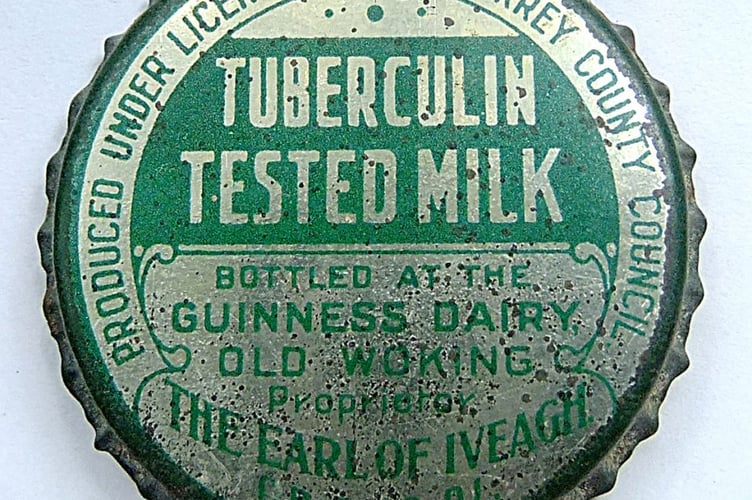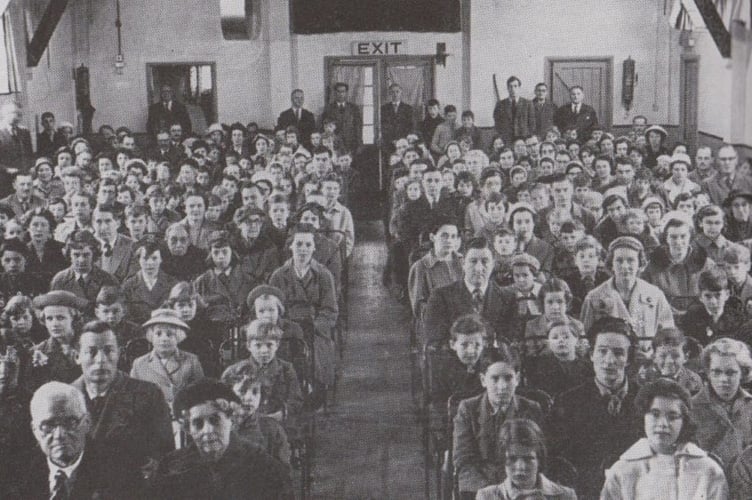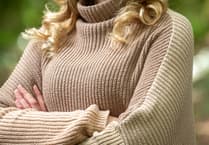THE 2nd Earl of Iveagh, Rupert Guinness, was the head of the famous Irish brewing dynasty. He must have been an extremely busy man when he and his family lived at Pyrford Court.
Not only was he a businessman and, for 19 years a politician, but also a key player in applying science to improve agriculture and farming methods. The Guinness Dairy at Hoebridge Farm on the earl’s estate was just one of the ways he accomplished this.
Born in 1874, he went to Eton College and Trinity College, Cambridge. He served with the Irish Hospital Corps in the Second Boer War, and was a Unionist MP for the London seat of Haggerston from 1908 to 1910. He was then MP for Southend from 1912 to 1927.
On the death of his father in 1927, he took the title the 2nd Earl of Iveagh and became chairman of Guinness in Dublin, a post he held until 1962. During that time he oversaw the business’s expansion, with breweries established in London, Nigeria and Malaya.

He married Lady Gwendolen Onslow, the daughter of Lord Onslow of Clandon Park, and they raised five children. From 1906, they established the Pyrford Court Estate on land bought from Lord Onslow. Work on their red-brick country house in the Neo-Carolean style designed by Clyde Young, began in 1907.
Soon the estate became a centre of agriculture and horticultural excellence. There was a substantial bothy to house trainee estate workers, an agricultural training school for Canadian emigres at Woking Park Farm that was established before the First World War, and a pollinarium along Carter’s Lane to study the effects of hay fever and possible causes. In addition, methane gas was extracted from farmyard manure and piped into the house as fuel for the ovens in the kitchen.
More of the earl’s agricultural experiments are mentioned in the book The Guinnesses by Joe Joyce (published by the Poolbeg Press). The author notes the earl and his scientific assistants discovered a method of turning straw into animal feed with the help of bacteria and formed the Agricultural Developments Company to exploit it commercially.
Another of the earl’s interests was in bovine tuberculosis. He was involved with the formation of the Tuberculin Tested Milk Producers Association in 1920, and gave £60,000 to the Research Institute for Dairying. This allowed it to produce and equip an experimental farm near Reading, while Pyrford can lay claim as the site where a system for sterilising milk and bottling was developed.

While visiting Canada, the earl noticed that emigrants from Britain employed on farms there often had little or no training in the work they were doing. For that reason he set up his emigration training farm, teaching men the basics of farming. His wife was involved with The Overseas Training School that taught women cooking, dairying and raising poultry. It is said that 200 people were trained each year.
As reported in Sporting Life in July 1912, the training farm was not for the faint hearted. The article stated: “No one who is not prepared for hard work is accepted as a pupil at the farm”.
The ordinary day was made up as follows: Rise 5am, milking etc 5.30am to 6.30am, breakfast 6.30am, work 7am to midday, lunch midday-1pm, work 1pm to 6pm, tea 6.15pm, lights out 9.30pm.
The report added: “There is no admission for friends during working hours, and the general rules are framed with the object of the pupil making the most of the training. Intoxicating liquor is forbidden and no smoking is allowed while the pupils are on duty.
“No special clothing is necessary but a pair of overalls such as worn in Canada can be purchased in Woking for 3s 11d.

“No charge is made for the training. For board and lodgings, which includes laundry, papers and petty breakages, the cost for the first fortnight is 25s per week; for the second fortnight £1 per week, and for any subsequent period 15s per week. But the pupil on entering must deposit enough money to pay his passage to his intended destination, plus the minimum amount required by the Immigration Department. This amount is refunded at the end of the training or when the necessary travelling tickets are obtained.”
The Elvedon Estate in Norfolk was also owned the earl. He and his wife transformed what was a rather barren shooting estate into a thriving farm with a fine herd of dairy cattle. The estate had been bought by the 1st Earl of Iveagh in 1894.
Gwendolen, the Countess of Iveagh, died on 19 February 1966, the earl died on 14 September 1967.
My thanks, as always, to Mark Coxhead. He and I have spoken at some length about Rupert Guinness and Pyrford, and Mark has supplied details for this week’s story.
If you have some memories or old pictures relating to the Woking area, call me, David Rose, on 01483 838960, or drop a line to the News & Mail.
David Rose is a local historian and writer who specialises in what he calls “the history within living memory” of people, places and events in the west Surrey area covering towns such as Woking and Guildford. He collects old photos and memorabilia relating to the area and the subject, and regularly gives illustrated local history talks to groups and societies. For enquiries and bookings please phone or email him at: [email protected]




